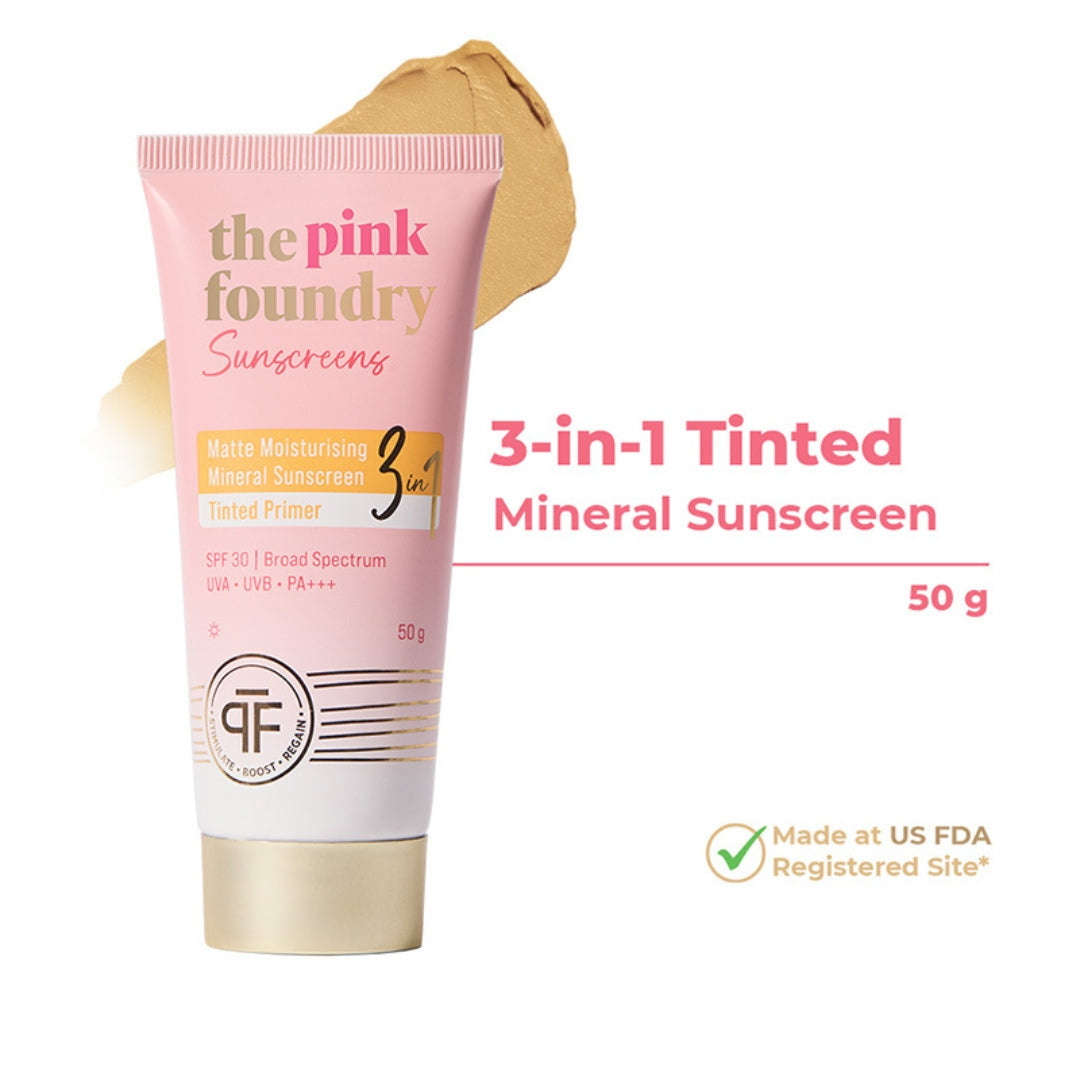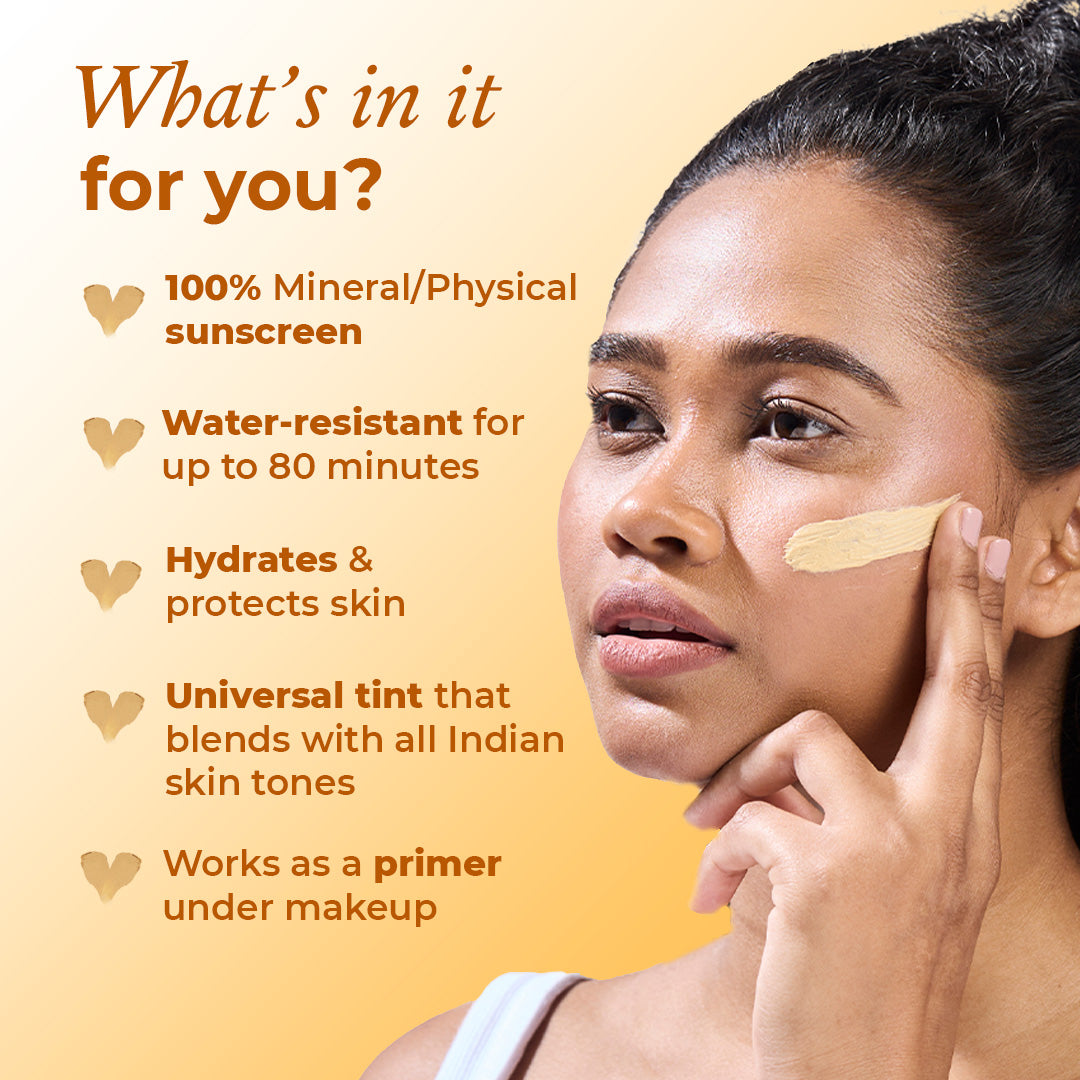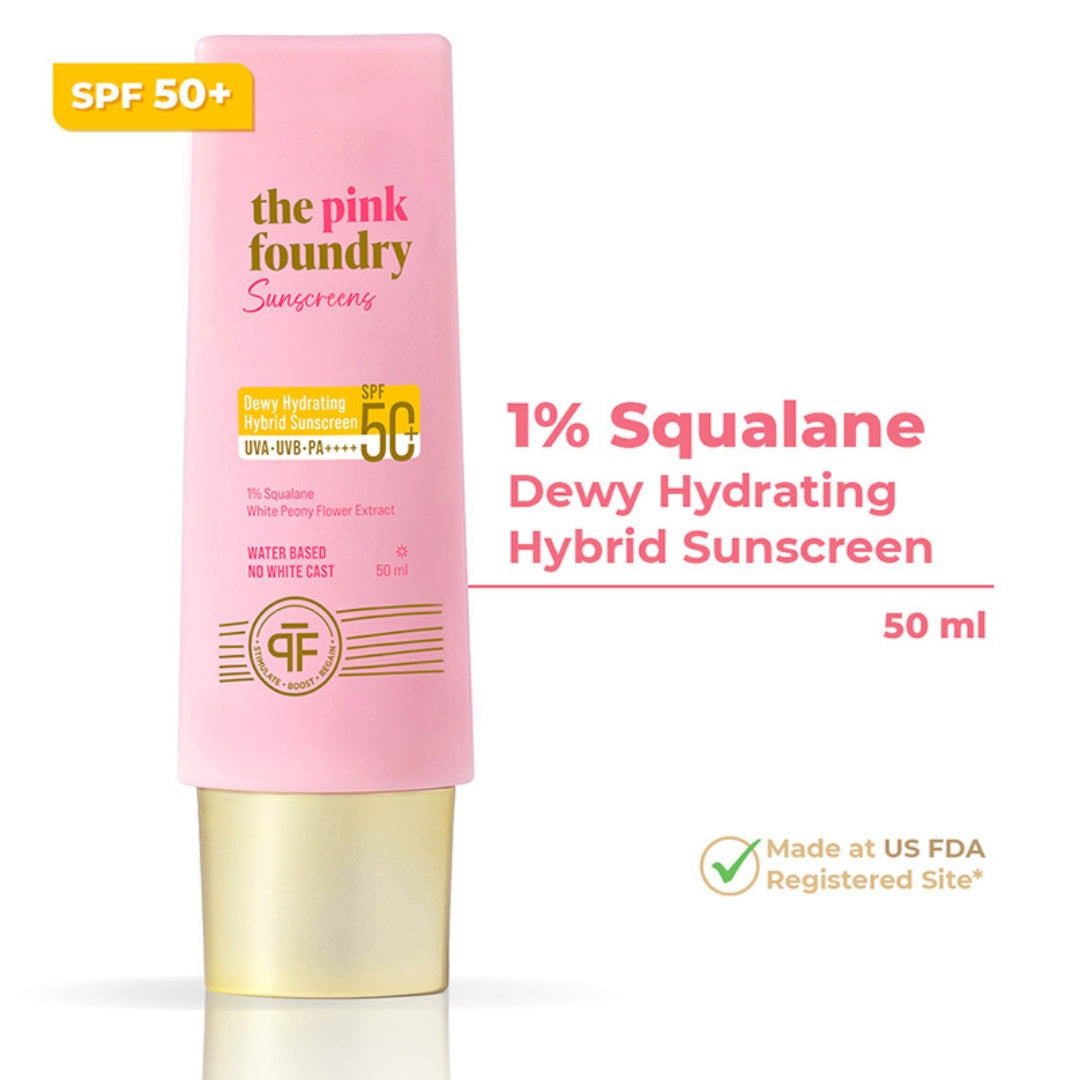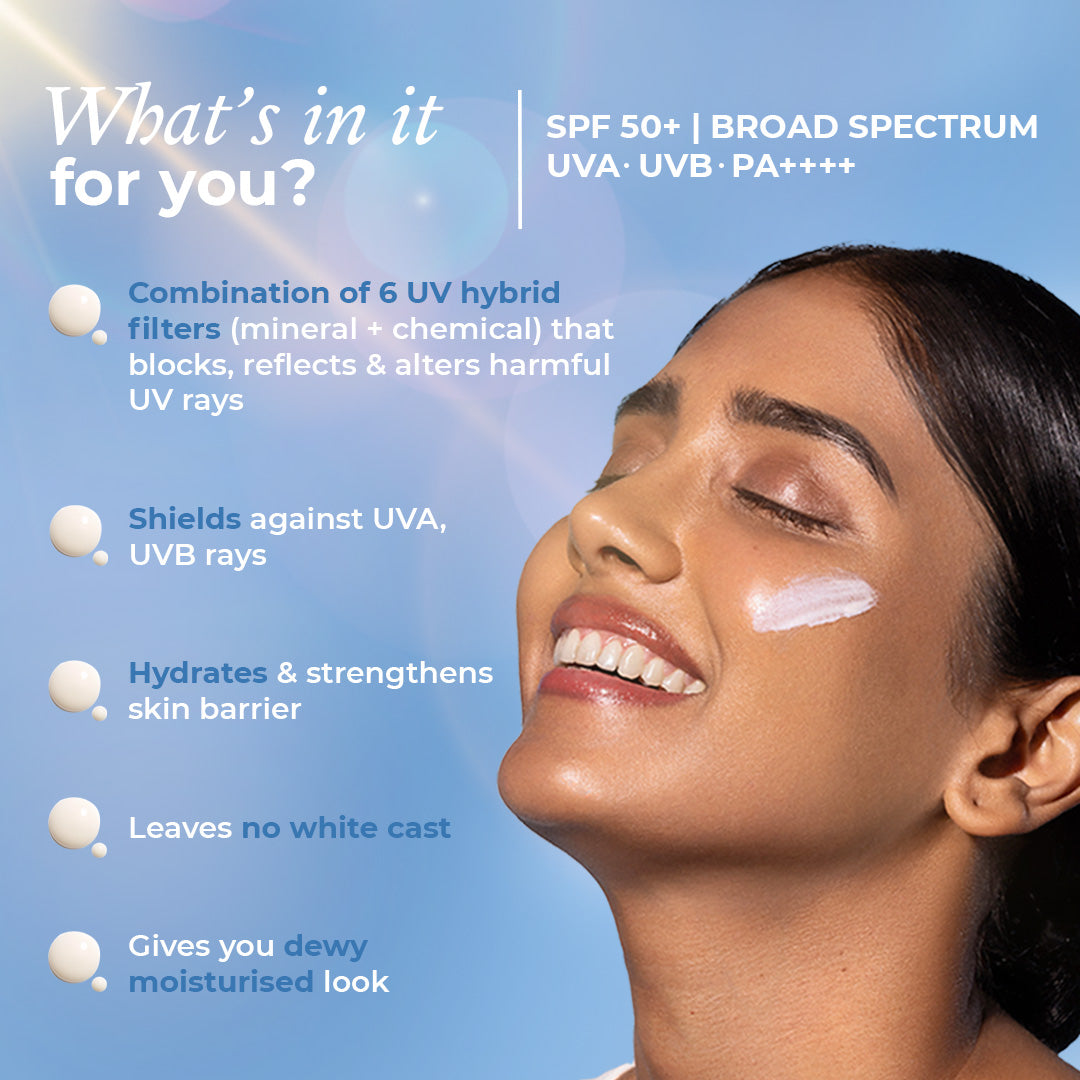Filters
Mineral Matte Tinted Sunscreen SPF 30
Sale price₹ 1,147
Regular price₹ 1,350
Dewy Hydrating Hybrid Sunscreen SPF 50+
Sale price₹ 636
Regular price₹ 749
September Skincare treats: Upto 30% Off | Shop for Rs. 1299+ & get Freebies | Extra 5% Off on Prepaid Orders

Cart
Your cart is empty

Sort by
2 products
Filters







